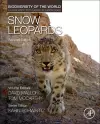
Snow Leopards
3 contributors - Hardback
£99.95
Philip Nyhus is the Director of the Environmental Studies Program at Colby College in Maine, Maine, US. His interdisciplinary research bridges the natural and social sciences to address human interactions with the environment, including endangered species conservation and recovery, human-wildlife conflict, large landscape conservation, and spatial modelling. He is co-editor of Tigers of the World: The Science, Politics and Conservation of Panthera tigris (2010). Dr. Tom McCarthy, Panthera’s Director of Snow Leopard Programs, began his conservation career studying brown bears, black bears, mountain goats and caribou in Alaska in the early 1980s. A strong interest in international conservation led him to Mongolia in 1992, where, under the guidance of Dr. George Schaller (known as “one of the founding fathers of wildlife conservation), he took over the management of a long-term snow leopard research project. He was the first biologist to use satellite radio-collars on snow leopards. McCarthy became the Science and Conservation Director of the Snow Leopard Trust in 2000 and has since led their extensive science and community-based conservation programs across much of snow leopard range in Asia. From 2002-2009, Dr. McCarthy served as Executive Director of the Snow Leopard Network, a global consortium of more than 200 professionals involved in snow leopard research and conservation. Among other research initiatives, Dr. McCarthy is leading both a range-wide assessment of snow leopard genetics that seeks to identify movement corridors which are critical to maintaining the health and genetic diversity of the species, and a revision of methods by which snow leopard populations can be monitored over time, including such novel non-invasive approaches as fecal genetics, camera trapping and statistical modeling based on sign surveys. Dr. David Mallon is not only a recognized expert on snow leopards, he is extremely knowledgeable on the conservation status of Central Asia as a whole. He conducted some of the early assessments of the status of snow leopards in Mongolia and has done surveys in many of the Himalayan range states. He has more than 25 years of field work experience in the Himalaya, Tibetan Plateau, Mongolia, Central Asia and Arabia, mainly focused on large mammals, and involving species surveys, biodiversity assessment, habitat assessment, camera trapping, training, capacity building, and training local partners in census and monitoring techniques. He is a Fellow of the Royal Geographical Society and the Zoological Society of London, as well as a member of the International Editorial Board for Oryx, the International Journal of Conservation. He has been a Steering Committee member of the Snow Leopard Network since its inception in 2003 and is currently the elected Chairman of that 400 member organization, which represents nearly every biologist and conservationist now active in the snow leopard world. He is highly respected among his peers as an expert on this cat.